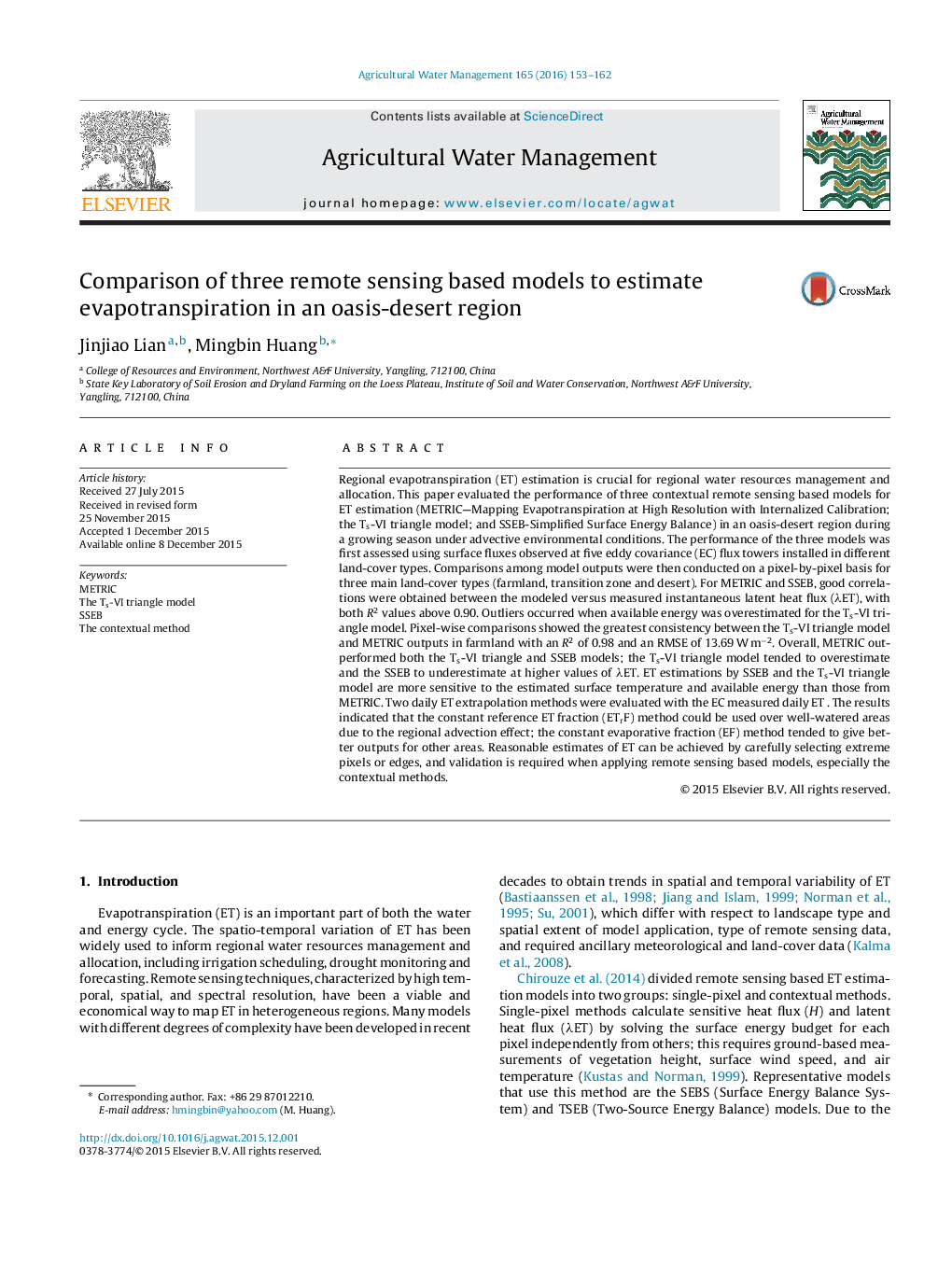| کد مقاله | کد نشریه | سال انتشار | مقاله انگلیسی | نسخه تمام متن |
|---|---|---|---|---|
| 4478309 | 1622915 | 2016 | 10 صفحه PDF | دانلود رایگان |
• Three contextual remote sensing based models for ET estimation were assessed.
• Good ET estimations were obtained for all models in farmland.
• Ts-VI triangle model and METRIC showed good consistency for ET estimation.
• Ts-VI and SSEB models appeared large error for ET estimation in the high range.
Regional evapotranspiration (ET) estimation is crucial for regional water resources management and allocation. This paper evaluated the performance of three contextual remote sensing based models for ET estimation (METRIC—Mapping Evapotranspiration at High Resolution with Internalized Calibration; the Ts-VI triangle model; and SSEB-Simplified Surface Energy Balance) in an oasis-desert region during a growing season under advective environmental conditions. The performance of the three models was first assessed using surface fluxes observed at five eddy covariance (EC) flux towers installed in different land-cover types. Comparisons among model outputs were then conducted on a pixel-by-pixel basis for three main land-cover types (farmland, transition zone and desert). For METRIC and SSEB, good correlations were obtained between the modeled versus measured instantaneous latent heat flux (λET), with both R2 values above 0.90. Outliers occurred when available energy was overestimated for the Ts-VI triangle model. Pixel-wise comparisons showed the greatest consistency between the Ts-VI triangle model and METRIC outputs in farmland with an R2 of 0.98 and an RMSE of 13.69 W m−2. Overall, METRIC outperformed both the Ts-VI triangle and SSEB models; the Ts-VI triangle model tended to overestimate and the SSEB to underestimate at higher values of λET. ET estimations by SSEB and the Ts-VI triangle model are more sensitive to the estimated surface temperature and available energy than those from METRIC. Two daily ET extrapolation methods were evaluated with the EC measured daily ET . The results indicated that the constant reference ET fraction (ETrF) method could be used over well-watered areas due to the regional advection effect; the constant evaporative fraction (EF) method tended to give better outputs for other areas. Reasonable estimates of ET can be achieved by carefully selecting extreme pixels or edges, and validation is required when applying remote sensing based models, especially the contextual methods.
Journal: Agricultural Water Management - Volume 165, February 2016, Pages 153–162
